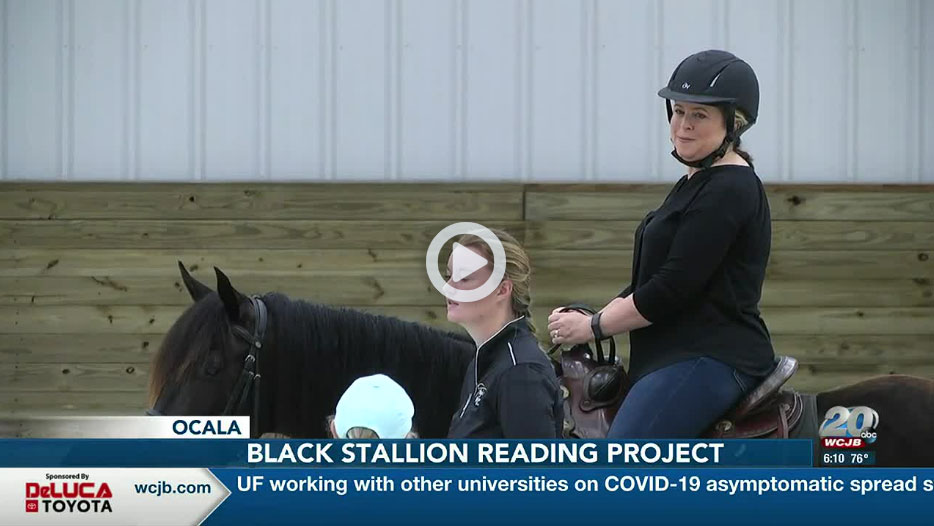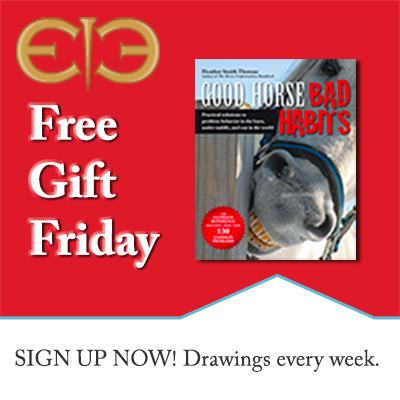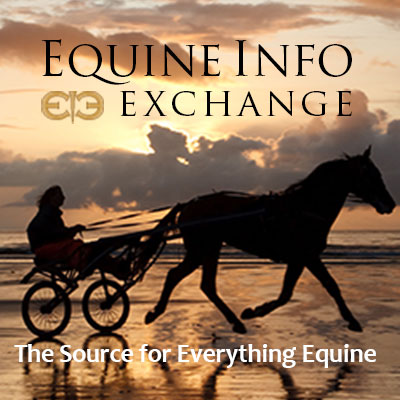Recreation & Lifestyle
Welcome to Recreation & Lifestyle, which includes leisure riding and other aspects of the equestrian lifestyle for you and your horse loving friends and family.
Looking for the perfect present? See the Gifts & Jewelry section. Redecorating? Find a Painting, Photograph or Sculpture in the Artwork section. Need to check out a movie or crawl up with a good book or magazine? See our Entertainment section where you will find and Books, Movies, Games, and Magazines. And don't forget about Fine Art in some specialty Museums that might surprise you.
Looking for love or a trail buddy? Riding Partners is the spot to seek other riders who share your passion. Find a place to ride with that special person in our Trail Riding section and if you need more time away, take a look at Vacations. Want to know about the next horse show or special event? Don’t miss it! Dates and locations are included in the Calendar of Events for Recreation & Lifestyle.
Do we need to add more? Please use the useful feedback link and let us know!
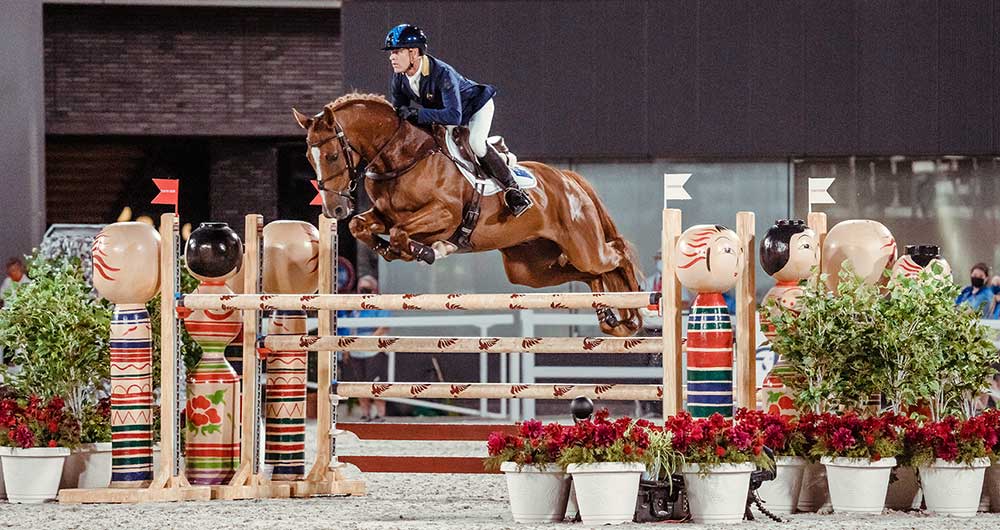
Gold Medal History Twice, Unsurprising Lone Dressage Score Finisher, Favorites Slip, Impact of Format & Frangibles, as Eventing Competition Concludes
By: Natalie Mayrath
Welcome to Tokyo Takeaways on StreamHorseTV! In this series StreamHorseTV will be talking Tokyo Equestrian with the lovely and knowledgeable Catie Staszak, international Show Jumping commentator, multimedia sports journalist, and CEO of Catie Staszak Media. We will provide discussion, insight and commentary around all the action happening on the ground during the Tokyo Olympic Equestrian Competitions.
We sum up an historic Olympics Eventing competition that saw the best ever team score in history, and the first-ever female gold medalist. While the two-time reigning gold medalist was pitted against the world-ranked number one rider, they both incurred jumping penalties to slip in the standings, dipping below our first female gold medalist, and an eventing legend in his eighth Olympic Games, who unsurprisingly was the only competitor to finish on his dressage score.
Gold Medal History -- Twice
The cross-country phase of three-day eventing usually proves influential, as Phillip Dutton described it. In these Tokyo Olympics, it caused some riders to slip in the standings, but it gave Great Britain their prelude to punching the best score ever recorded in Olympic Eventing history to claim the gold medal.
Australia took the silver in deserved fashion boasting the likes of Andrew Hoy, Kevin McNab, and Shane Rose. France, who won team gold in Rio, settled for bronze here.
Team Great Britain was flawless with three double-clear rounds on cross-country, and they sealed their powerhouse performance by turning in exemplary show jumping rounds, although they were so far ahead that they had many rails to spare. Staszak says, “they still had three rails in hand, it was so, so impressive.”
Also entering the record books is eventing’s first-ever female Olympic Gold medalist.

It's an exciting time for Equestrian events at the Tokyo Olympics. You can find a complete Schedule of Events HERE where you can Live Stream or see replays. Don't miss a thing!
In 1964 women were first allowed in this stadium in Tokyo. Now for the first time in history, a woman won Individual Eventing. Julia Krajewski for Germany wins the Gold medal and makes history as the first female winner in the Olympics in Individual Eventing!
You can find results in the Equestrian Medals Standings HERE.
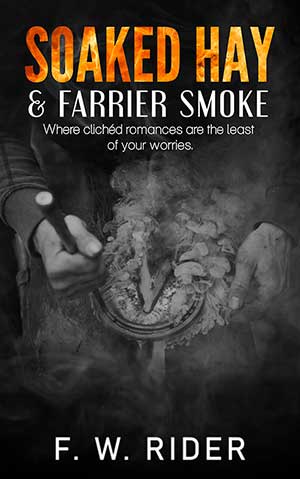
R.W. Rider
The weather has well and truly turned. To say it’s shitty is an understatement. In spite of what felt like a pretty mild Christmas, January has arrived and wow, has it let us know it’s here. But whatever the weather, I still venture out daily and today has been no exception. I’ve been up since about 5 a.m. and am officially knackered. A rather looming deadline, one I’ve left until the very last minute – well done, me – meant waking at the crack of dawn like some nocturnal creature and hitting the keys on my Mac for a few hours.
To be fair, while I seriously loathe that immediate feeling of sheer exhaustion when your alarm goes off, getting up early and smashing out a whole chunk of work before the sun even rises is my favourite way to start the day. Not because I’m dedicated… well I guess I am a little, but mainly because it means I can drop the laptop back on the bed and head to my favourite place in the middle of the day – the yard.
Is it bad that I’ve always loved my own company? I don’t think so, though I could do without the pitying stares that constantly come my way. I love my friends, I do. I love my family, or what family I have – just me and mum – but I also love my own company. Well, my company when I’m with my man. That man just so happens to weigh about three quarters of a tonne, have four mighty striking legs and the cutest little whiskers. That man is my warmblood Lincoln.
Today my diary is marked for the farrier visit. Yet another one of Lincoln’s regular spa days as I call them. Every seven weeks on the dot, this guy gets four new shoes and I get a slightly lighter wallet. Thankfully, the sting’s taken out of handing over almost £100 every seven weeks by the sheer fact that I’m secretly in love with the man who takes it. Before you say it… how cliché. Yes, yes, who’d have thought it? A horsey girl in love with the farrier, but Jesus man, the guy’s a god.
I’ve known Eddie for years, even before Lincoln came along. I knew him as the guy who used to shoe my old loan pony before I could actually afford my own horse. It’s funny because I actually began using a different farrier when I got Lincoln, who as it turns out preferred ‘shoeing’ of a different kind. He gave some random guy a good seeing to after a night on the sauce and got sent down for GBH.
I needed a farrier to step in at the last minute before a show and who should volunteer in all his man-mountain glory but Eddie? I’d always admired him from afar. He’s a rugged kind of handsome, with a dark curly mop on top of his head and stubble to match. He also happens to be thirty - three, a little older than me, but that doesn’t stop the continual spark between us. I’ve never had any intention of taking it further though – just the thought of being another notch on a farrier’s rasp turns my stomach.
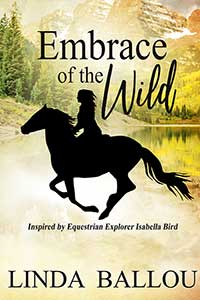
It was a lovely Indian summer day on the plains when I mounted Birdie. As usual, the gallant pony appeared as eager as I to get on the road. All traces of snow had melted in the warm sun. Fresh from the week off, she galloped across the plain as though she enjoyed it. The first day out was a great pleasure. I yearned for the solitude that allows my thoughts to settle. Riding alone encourages introspection. The rhythmic sound of Birdie’s hoof beats and the puffing of her warm breath sent me into a quiet meditation. Time with my dear desperado had changed me and filled me with unanswered questions. Could I now continue to live without the tender attentions of a loving man as I had done for the first forty years of my life? Would I become incurably bored without society and find a man to be another entrapment? Should I go on with my journey, or should I stop here in the heartbeat of the wild? It is in the interludes between being in company that we talk to ourselves. In the silence we listen to ourselves. In the quietude we find answers.
Read more: Mountain Tour, an Excerpt from Embrace of the Wild by Linda Ballou
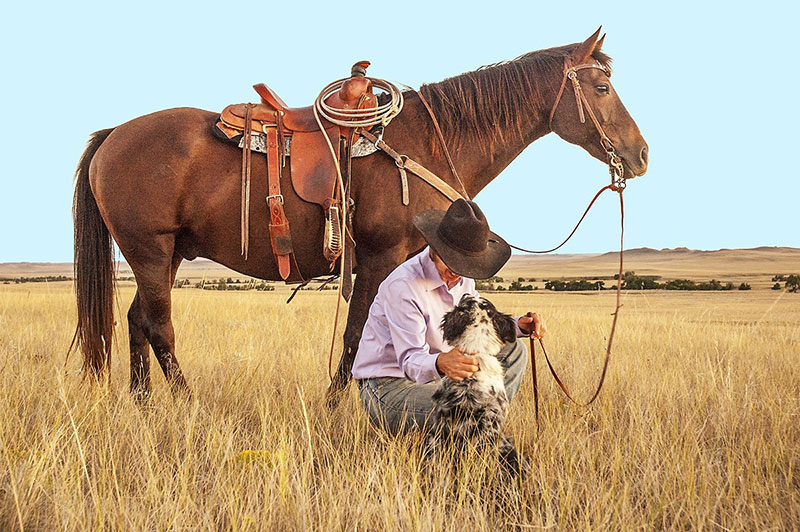
by the EIE Editorial Staff
Owning a horse can be a wonderful and life fulfilling experience. For many of us it is a lifelong dream come true. As a child, how many of us would blow out birthday candles fervently wishing for a pony or horse? You’ve decided that now it’s time to move forward and actually purchase a horse of your own.
Taking the plunge can be an intimidating process since for most people, buying a horse is a completely unfamiliar journey.
Learning from other’s mistakes is a great way to prepare for your purchase of a horse. So, what are some of the pitfalls to avoid?
We’ve compiled a list of the top 10 of the most common mistakes novice horse owners make when buying a horse or pony.
Common Mistakes People Make When Buying Their First Horse
- Buying Sight-Unseen or on the Internet
- Purchasing a Horse Based Solely on Color
- Thinking a Free Horse is Really Free
- Failing to Seek Out Experienced Advice when Purchasing
- Not Buying a Horse That Fulfills Your Needs
- Buying from People With No, (or Questionable), Reputations
- Not Trying the Horse for Yourself
- Going Blindly into an Auction
- Buying an Untrained Horse
- Not Considering Older Horses
1. Buying Sight-Unseen or on the Internet
We are all emotionally touched by the magnificent horses we see online. There are beautiful cinematic videos on the Internet of horses moving gallantly and gracefully, well photographed and compelling. The animal is jumping like a dream, running barrels in record time, or simply galloping free through a picturesque landscape.
Today, virtually everything is available online. It’s perfectly reasonable to think that this should apply to horses as well, but it doesn’t. Horses aren’t commodities. They are individuals, with unique needs and temperaments, and like the foundation of all successful long-term relationships, you must have a strong connection.
A horse only familiar with its previous owner or trainer may perform very differently for a new owner or in a new environment. Meeting the horse in person will allow you to see firsthand what the horse is like, and how the two of you mesh. You would never buy a car without a test drive, so why wouldn’t you take the same precaution for a transaction which is much more personal than buying a car?
Read more: The TOP 10 Mistakes People Make when Buying a Pleasure Horse
“In fact if it weren’t for horses, I probably wouldn’t have gone to college...”
OCALA, Fla. (WCJB) - Fourth graders in Marion County are about to get a lesson about the equine industry as they gallop into the fictional world of a boy and his wild black stallion.
Through the Black Stallion Reading Project, elementary students in the north central Florida county are getting what could be their first or only encounter with a horse.
We’re getting a show this morning! Sham is a 5-year-old male black stallion. #BlackStallionReadingProject @MarionCountyK12 @WCJB20 pic.twitter.com/oVwh4S3TjV
— Julia Laude (@JuliaMaeLaude) March 29, 2021
In partnership with the Ocala Horse Alliance, these students will receive a copy of ‘The Black Stallion’ by Walter Farley, and their own ‘tack trunk.’
“It a great way to engage students in reading and give them exposure to horses and maybe even get them thinking about a career in the horse industry. And not just a book. They’re also going to get a tack trunk that has horse related items in it including sealed bags of hay and sugar cubes,” MCPS School Boar Chair, Nancy Thrower said.
Over the next five years, the Black Stallion Reading Project will allow students to get up close and personal with horses.
Read more: Marion County Public Schools new reading program, students learn about equine industry
OCALA, Fla. (WCJB) - Fourth graders in Marion County are about to get a lesson about the equine industry as they gallop into the fictional world of a boy and his wild black stallion.
Through the Black Stallion Reading Project, elementary students in the north central Florida county are getting what could be their first or only encounter with a horse.
We’re getting a show this morning! Sham is a 5-year-old male black stallion. @MarionCountyK12 @WCJB20 pic.twitter.com/oVwh4S3TjV
— Julia Laude (@JuliaMaeLaude) March 29, 2021
In partnership with the Ocala Horse Alliance, these students will receive a copy of ‘The Black Stallion’ by Walter Farley, and their own ‘tack trunk.’
“It a great way to engage students in reading and give them exposure to horses and maybe even get them thinking about a career in the horse industry. And not just a book. They’re also going to get a tack trunk that has horse related items in it including sealed bags of hay and sugar cubes,” MCPS School Boar Chair, Nancy Thrower said.
Over the next five years, the Black Stallion Reading Project will allow students to get up close and personal with horses.
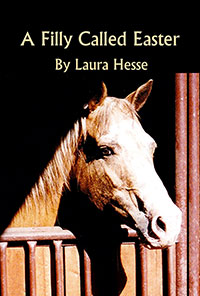
by Laura Hesse
The golden palomino standing before her with soft brown eyes and a silver mane and tail was drop dead gorgeous… and much too young to be that pregnant! What was a filly like her doing at a slaughter house auction? Would her father let Linda take her home? Times were hard. Could they afford the vet bills for the filly and her unborn foal? There were bound to be many. Find the answer to these questions in this amazing Hallmark style story about love at first sight and the girl who just wouldn’t give up on the filly called Easter, especially when Mother Nature enters into the fray. Inspired by a true story.
The Auction
“Dad,” Linda McCloud asked casually from across the kitchen table, a spoonful of Cheerios in one hand, the bowl on the table in front of her more cereal than milk.
“Yes, Sweet Pea,” Tom McCloud replied. He sighed heavily and put down the Financial Post, a dispirited look on his face. Beef prices were still low and showed no sign of getting any better. He folded the paper an extra two times and tossed it in the recycle box by the door: out of sight, out of mind!
“Can I come to the auction with you and Ross today?” his daughter beamed sweetly.
Tom looked up and grinned, his spirits lifting at the sight of the sparkling blue eyes and the earnest face that greeted him. Linda was the image of her mother: blue-grey eyes, shoulder length dirty blond hair and a full moon face. She was the picture of innocence, however cheeky her motive. His heart swelled with pride whenever he looked at her. His daughter never ceased to amaze him and he wasn’t surprised by her question. Tom tried to keep his face stern and sober. He already knew why she wanted to come today, but didn’t let on.
“You don’t think that you’d be bored? Cattle auctions, these days, aren’t much fun,” he said, lifting a mug to his lips. He gulped down the last of the strong coffee and placed the “World’s Greatest Dad” mug down on the table. It had been a Christmas present from his son and daughter a couple of years ago; it was his favorite cup.
“I won’t get in your way. I promise. I’d just like to go, that’s all,” she finished. “You’ve never taken me before and I want to see the bulls. I think it’d be neat!”
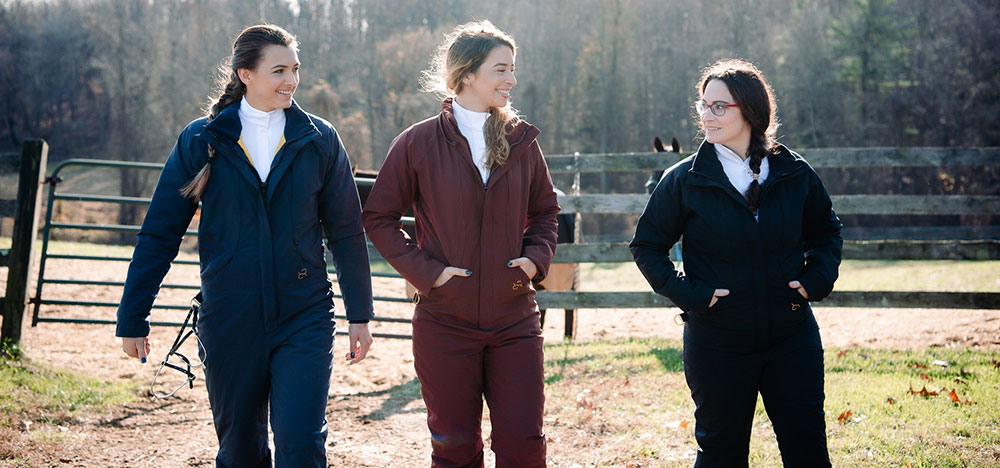
If you are over winter, like me, then here are some tips to stay motivated to ride and work with your horse!
Many equestrians focus on the care of horses during cold and icy winter months, which leaves little time to rider. If you are fortunate enough to have a full-care facility the chances of riding are much greater. Still, waking up to ice on the ground and freezing temperatures make it difficult to leave the house and spend time exercising outdoors.
For me, winter has always been the best time to ride. My bodywork clients are quieter because show season is suspended and my pony moves more forward.
Remember, a longer warm up is not only good for your horse but for you as well.
Get up, get dressed and get out.
Waking up in the cold and dark makes me want to hide under the covers. Still, I usually put my clothes out the evening before to make things a little easier. Shower, get dressed and ready for the day. The nicer I dress, the nicer I feel. During the time of COVID (ugh) it has been difficult to not wear my pajamas all day every day. Dress for the mood you want, not necessarily the mood you have. Save the pj’s for when you come back from the barn.
I know from experience, the hardest thing to do is make that first step into the biting air. How many of you regret ever going to the barn? Not me. But I do regret NOT going. The first step is the hardest but I always make the effort to at least leave the house. Once I do, it’s a no brainer to go to my favorite place .
Dress Yourself Appropriately
Dressing in layers is ideal. As you exercise you will increase your body temperature and begin to sweat. Make sure you have a moisture-wicking base layer so you don’t lose heat when you do. I work outside and there is a big difference when I come prepared.
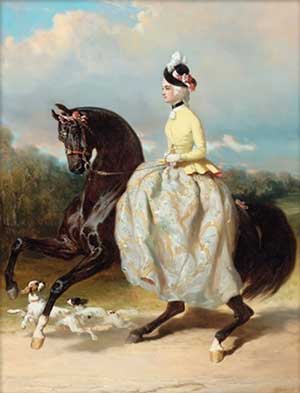
by Judith Martin Woodall
"In my opinion, from a physiological point of view, it would be immeasurably better for women to ride astride. This position, on horse[back] would, I think, render the exercise of much more benefit to women. The circulatory and muscular systems would receive the greater tonic effect from the riding in this symmetrical position.” Dr. Sarah A. French, M.D. 1
In 1895 most horsemen and women would have answered the question with an emphatic, NO! But Dr. French was among 500 physicians in New York City who responded to an inquiry from Ernst Carl von Gillmann, the head riding master at Dickel's Riding Academy on West Fifty-sixth Street in New York in January of that year. The issue had been roiling for some time and was given added attention later in the year when the British actress, Dorothy Chestie, was arrested on a charge of disturbing the peace while riding astride in Central Park. She was apprehended wearing a knee-length fitted coat that draped across her upper thigh and back over the cantle of the saddle. To complete her habit, she sported a bowler hat, a high-necked white shirt, light-colored bloomers tucked into tall boots, and dark gloves. The actress, who was appearing in the play, The Newest Woman, a comedy satirizing the growing feminism of the era, declared that she always wore bloomers, always rode astride at home in England, and was herself a “new woman.”
Police Commissioner Theodore Roosevelt was asked to “interpret police duties in such a case.” The Commissioner frequently rode in the park where he could be seen in a top hat and frock coat, the complete opposite of his now prevalent rough rider image. He issued a statement that there was no law against women riding astride, provided they were riding “in a proper manner.” 2 Based on existing photos, Chestie was not a polished rider, which may have been a factor in the mountie's decision to arrest her.
Gillmann confessed that he had never given much thought to women riding astride. The riding master found it difficult to obtain dispassionate views on the subject, especially regarding the female anatomy. It was an article of faith among naysayers that women could not ride astride safely because their cushioned derriéres prevented them from sitting deep in the saddle, and their legs from the hip to the knee were shorter and rounder than a man’s, making it difficult to "grip." Even if their thighs were not overly round, as "the weaker sex," they simply hadn't the strength to grip and needed the support of a sidesaddle. One horsewoman observed as late as 1912 that she might accept the "fraudulent notion" that women had insufficient gripping power if it were not for the numbers of men she saw falling off their horses in Central Park on a regular basis.
Read more: A Burning Question In The 1890s – Shall Women Ride Astride?
- Horses: Portraits & Stories by Shelley Paulson
- Deborah Kalas, The Wild Herd Excerpt
- An Excerpt from "Red Rock Ranch: Lucy's Chance" by Brittney Joy
- Excerpt from "Racing Time, A Memoir of Love, Loss and Liberation"
- Shaving the Beasts: Wild Horses and Ritual in Spain
- Stars and Horses: The Accidents and the Naturals
- Remembering Author, Equestrian, and Publisher Bonnie Marlewski-Probert
- Cowgirl Lessons - An Excerpt from the New Children's Book
- A Daughter of His Own, An Excerpt from Distant Skies: An American Journey on Horseback
- In the Reins - Carly Kade’s Equestrian Romance






